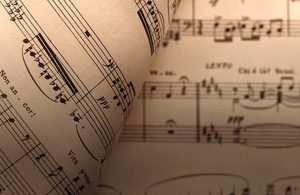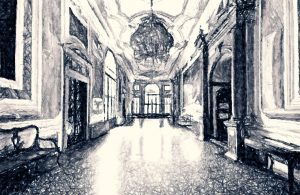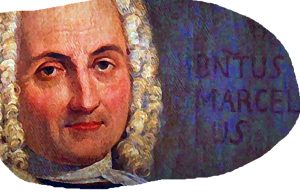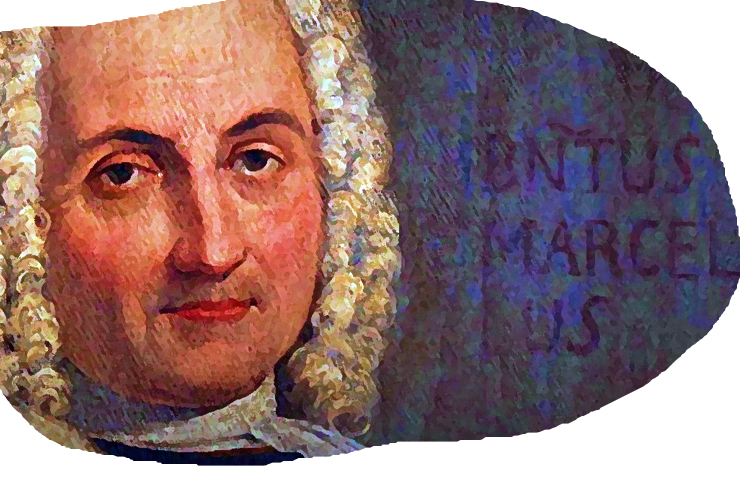Setting the stage for Classical in Western music



 In 1713, 24 of his cantatas for solo voice and basso continuo, performed weekly in private academies, date back to 1713, but he also cultivated a passion for instrumental music, including sonatas for harpsichord, cello and bass. To get to know the splendor of Venice, in addition to appreciating its pictorial school, you cannot give up capturing the musical magic of Benedetto Marcello https://www.youtube.com/watch?v=_ioc6sdgugo, together with his famous book, the Fashionable Theater, which gave ironic advice to composers and singers.
In 1713, 24 of his cantatas for solo voice and basso continuo, performed weekly in private academies, date back to 1713, but he also cultivated a passion for instrumental music, including sonatas for harpsichord, cello and bass. To get to know the splendor of Venice, in addition to appreciating its pictorial school, you cannot give up capturing the musical magic of Benedetto Marcello https://www.youtube.com/watch?v=_ioc6sdgugo, together with his famous book, the Fashionable Theater, which gave ironic advice to composers and singers.



 The Conservatorio di Musica di Venezia, was named after him.The library of the Brussels Conservatoire possesses some interesting volumes of his chamber-cantatas. He combined a life in law and public service with one in music. Italian composer and writer, born in Venice into an August day1686, Benedetto Marcello http://www.conservatoriovenezia.net/ was a member of a noble family. Although he was a music student, his father wanted him to devote himself to law. In 1711, he was appointed member of the Council of Forty, in Venice’s central government.
The Conservatorio di Musica di Venezia, was named after him.The library of the Brussels Conservatoire possesses some interesting volumes of his chamber-cantatas. He combined a life in law and public service with one in music. Italian composer and writer, born in Venice into an August day1686, Benedetto Marcello http://www.conservatoriovenezia.net/ was a member of a noble family. Although he was a music student, his father wanted him to devote himself to law. In 1711, he was appointed member of the Council of Forty, in Venice’s central government.



 His music is characterized by imagination and a fine technique. Through his advocacy of a return to the simplicity of ancient Greco-Roman civilization, he unseat the aesthetic norms of the Baroque. As a composer, is now still best remembered for his the “Psalms,” a musical setting. His Psalms were heard during the 18th century at concerts in Rome and Hamburg, Berlin, Leipzig and London. His instrumental music enjoys a Vivaldian flavor. Benedetto Marcello https://www.museodellamusica.com/ was an aristocrat who also pursued musical composition in Venice.
His music is characterized by imagination and a fine technique. Through his advocacy of a return to the simplicity of ancient Greco-Roman civilization, he unseat the aesthetic norms of the Baroque. As a composer, is now still best remembered for his the “Psalms,” a musical setting. His Psalms were heard during the 18th century at concerts in Rome and Hamburg, Berlin, Leipzig and London. His instrumental music enjoys a Vivaldian flavor. Benedetto Marcello https://www.museodellamusica.com/ was an aristocrat who also pursued musical composition in Venice.

 He was one of the first composers to write for the cello and leaves, a series of sonatas high quality. Benedetto Marcello https://classicalmusiconly.com/composer/benedetto-marcello/works/tv wrote nearly 400 cantatas and nearly 100 small chamber works for singers. Scarcely less popular was his treatise, Il teatro alla moda, a satire that skewered the opera world of his time. His sacred vocal music was in use in teaching through the end of the 19th century. He died in 1739, into a July day, in Brescia. A road in Rome have is name. He was also a poet and translated John Dryden’s Timotheus as a text for one of his own cantatas.
He was one of the first composers to write for the cello and leaves, a series of sonatas high quality. Benedetto Marcello https://classicalmusiconly.com/composer/benedetto-marcello/works/tv wrote nearly 400 cantatas and nearly 100 small chamber works for singers. Scarcely less popular was his treatise, Il teatro alla moda, a satire that skewered the opera world of his time. His sacred vocal music was in use in teaching through the end of the 19th century. He died in 1739, into a July day, in Brescia. A road in Rome have is name. He was also a poet and translated John Dryden’s Timotheus as a text for one of his own cantatas.
If you want to get to know international music scene, you can type http://meetingbenches.com/category/music/. The property of the images that appear in this blog correspond to their authors. The sole purpose of this site is to spread the knowledge of these artists and that other people enjoy their works.







